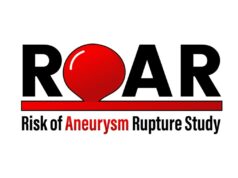The result of a survey of more than 100 studies involving the PIB-PET instrument, including those by the scientists, confirms the sensitivity of the tool, not yet commercially available. In clinical practice, amyloid deposits are detected only on autopsy.
The study also provides strong evidence supporting the so-called “amyloid hypothesis” the theory that accumulation of amyloid-beta protein plaques in the brain is central to the development of the disease. While significant evidence has supported this hypothesis, it has been questioned for two main reasons. First, amyloid deposits do not correlate with the severity of the disease, and are, in fact, found at autopsy in people who did not have clinical symptoms; and second, drugs targeting the plaques have shown disappointing results, even when the drugs were successful at substantially lowering plaque burden. So, the question of amyloid’s role in the illness has remained unresolved.
“Our survey of PIB-PET studies, which looked cross-sectionally and longitudinally at people with normal cognitive performance, mild cognitive impairment and full-fledged Alzheimer’s disease, showed that amyloid deposits can be detected in a significant proportion of cognitively normal older adults, and that their presence is associated with Alzheimer’s like brain atrophy and changes in brain activity,” says co-author Gil Rabinovici.
The study also showed that older individuals with amyloid deposits were much more likely to show cognitive decline over time than their “amyloid-negative” counterparts, says Rabinovici, whose co-author was William Jagust,. The results of the survey, reported in a special issue of the journal Behavioral may explain why patients with Alzheimer’s disease have not responded to promising experimental drugs that target amyloid, and suggest that these drugs may be effective if administered earlier.
“Amyloid deposits appear to reach a plateau early in the disease course, when patients experience very mild symptoms or no symptoms at all,” says Rabinovici. “By the time patients have developed the symptoms of Alzheimer’s disease, clinical decline and brain changes are occurring independently of further amyloid accumulation. This suggests that we have been starting treatment too late, and that amyloid-based therapies are most likely to work very early in the disease process.”










